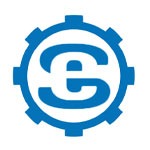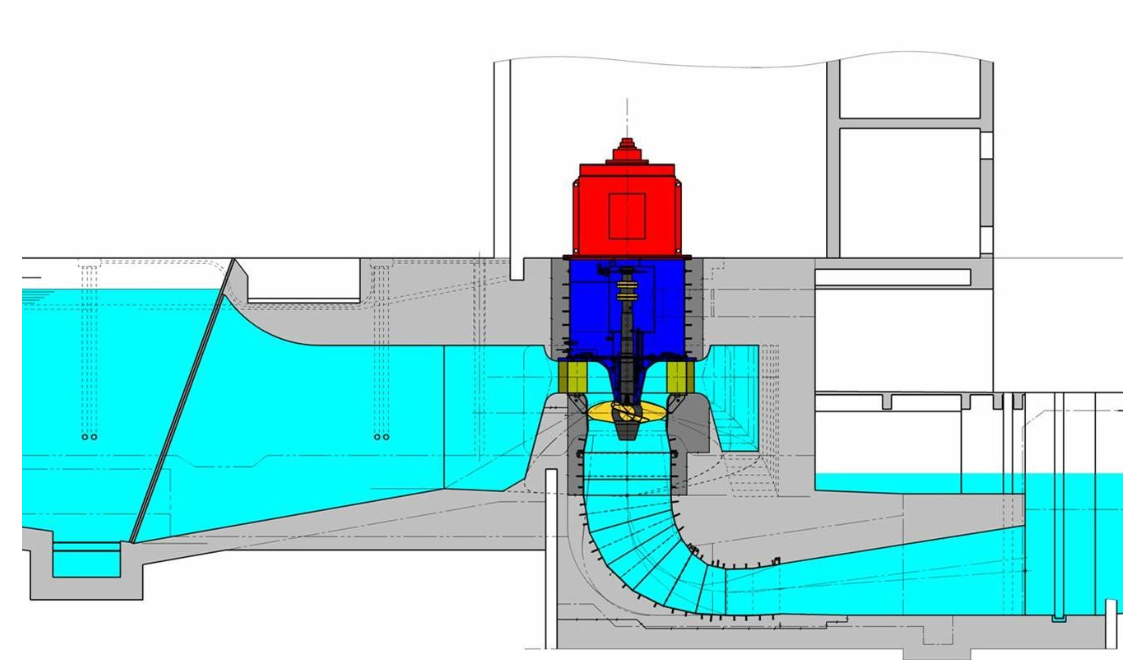Introduction
Low-head hydropower refers to hydropower
developments where the head is typically less than
20 meters, although the exact definition varies.
Head is
the vertical height measured between the water inlet and outlet water levels.
By using only small drops in rivers and
tides to generate electricity, we can provide a renewable energy source with minimal environmental impact. Since the
power produced is a function of the head, these systems
are usually classified as small-scale hydro with installed
capacity of less than 5 MW.
Types of low head hydroelectric generator
Run of Run (RoR)
It is possible to generate low
head hydropower from rivers, so called river of
run or run of river projects. Weirs, rivers,
streams, locks and sewage discharges are suitable
for this. Weirs are common along rivers throughout Europe. They are
also common in canalized rivers and rivers with breakwaters.
Conventional technology typically requires large amounts of
water to generate significant power at low head sites. In order to
drive generators efficiently, gearboxes must be used, requiring
expensive equipment and civil infrastructure. When using run-in
water, head is usually provided by a canal, pipe or tunnel built
upstream of the power plant. The steep descents such as waterfalls and
rapids are attractive because upstream construction costs are
required.
hydroelectric plants using run-of-river
technology have little or no reservoirs. Depending on the
power plant, the reservoir is called a pond because in
run-of-river operations there is no reservoir or only
a limited volume. These non-pond structures act as intermittent energy
sources as they are subject to seasonal river flow patterns.
Water is stored in conventional reservoirs
and serves as flood control, power source
for transportation, and fresh water supply for agriculture.
Tidal Hydropower
Combined with dams and lagoons, the
tidal ebb and flow creates height differences. Le Reims in
France is where the tidal range first opened.
Tidal energy is not yet widely used,
but it could become an important power source in the future. Tides
are more predictable than the wind and the sun. Among
renewable resources, the main drawbacks of tidal power
are that it is relatively expensive and difficult to
find locations with strong tidal current
speeds or extents.
A number of technological
developments have occurred in recent years as technology has improved,
suggesting that the capacity of tidal power generation may
be much greater than previously thought. Design
improvements include dynamic tidal power and tidal lagoons with various
configurations such as new axial and cross-flow turbines. As a
result, economic and environmental costs can be lowered to
competitive levels.
Low Head Pumped Seawater Storage
Currently these technologies are at very
low TRL levels. However, it may become part of the energy
system in the future. Load sharing is achieved with this
form of energy storage from hydropower. Turbines release stored
water to generate electricity during periods of
high power demand.
Dynamic Tidal Power
Dynamic Tidal Power, a
method of harnessing the power of tidal
movement, is another promising type
of low-head hydropower. A dam-like structure is
required, but because the area is unenclosed, there remains
"damless hydropower", while at the same time producing
enormous amounts of electricity.
Low Head Turbine Types
Turbines suitable for low head service vary from Francis, Propeller,
Kaplan and Pelton designs as compared to turbines used in more
conventional large hydro applications.
There are various types of
low head turbines.
Archimedes Screw Turbine
Archimedes screw turbines are relatively new
in the world of small hydropower, having been introduced only ten years ago. However, as pumps they have
been around for decades and have been installed tens of
thousands of times around the world, especially in sewage treatment plants. The Archimedes screw turbine works in the same
way as the Archimedes screw pump, but in reverse order. The
weight of the water on the blades of the propeller causes the shaft
to rotate as it enters the top of the shaft, causing the
water to drop to the lower level. The
generator can be driven by a rotating
shaft. Due to the slow speed, a gearbox is required. The screws
are designed for low heads (1.5 to 5 meters) and medium to high flow rates
(1 to 20 m^3/s). Multiple screws are used to
increase flow. The turbine blade design and low
speed rotation make for a large but friendly turbine for aquatic life.
Kaplan Turbine
Kaplan Turbine is a propeller
turbine that can generate
electricity at different heads and flow rates. Kaplan
pumps operate at low to medium head (1.5 to 20
meters) with flow ranges from 3 m3/s to 30 m3/s. It is possible to use multiple
turbines at high flow rates. These turbines can be harmful
to aquatic life. They usually require
a full screen from the water.
Issues to Consider When Using Low Head Turbines
The environmental impact of
river flow and tidal turbines raises several concerns.
Aquatic
Rotating knives pose a threat to
aquatic life such as fish. Screening systems can be used
within waterways to eliminate the risk of moving parts coming
into contact with marine life. It has been extensively tested
for safety and is certified safe for smolts, adult fish,
eels, seabirds and marine ecosystems.
Seafloor Topography
It is undeniable that devices alter wave patterns
and currents, resulting in changes in
sediment deposition. Studies to date have shown no
significant impacts or even benefits such as slowing
coastal erosion. This is especially important given that
waves are steadily increasing in size. Downwind
of the device, seas can be calmer than normal, but this is
reported to free up more space for activities such as water sports
and sailing. Considerations may make it difficult to obtain
permits for hydroelectric plants on rivers and
similar waterways. There may be resistance to major infrastructure
and other visible infrastructure above water.
B. Archimedes screw system and turbine house. Vibrations
caused by the
gearbox can also raise environmental concerns that can
affect nearby wildlife such as otters and birds. A
major impact could be generated by
the large transmission lines required to carry power from
the shoreline to end users.






